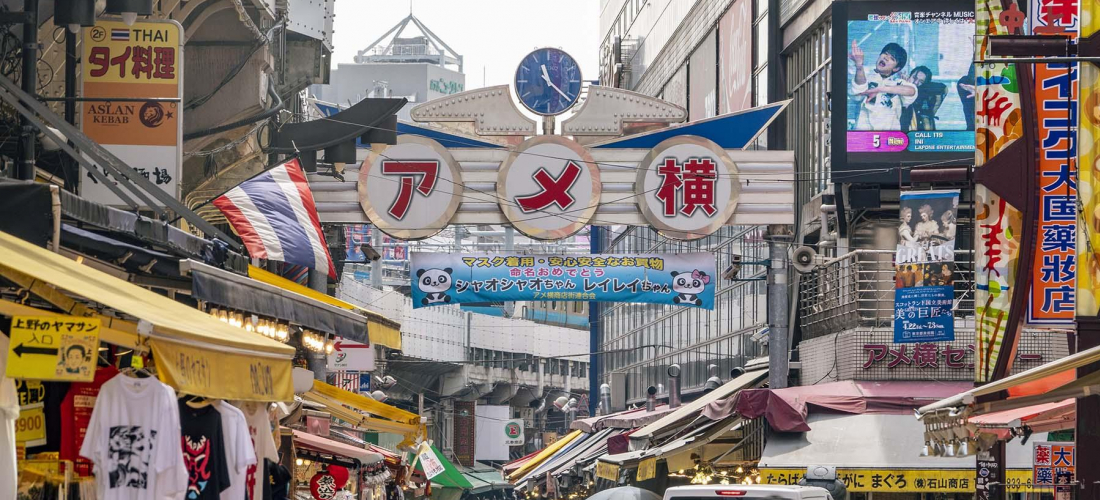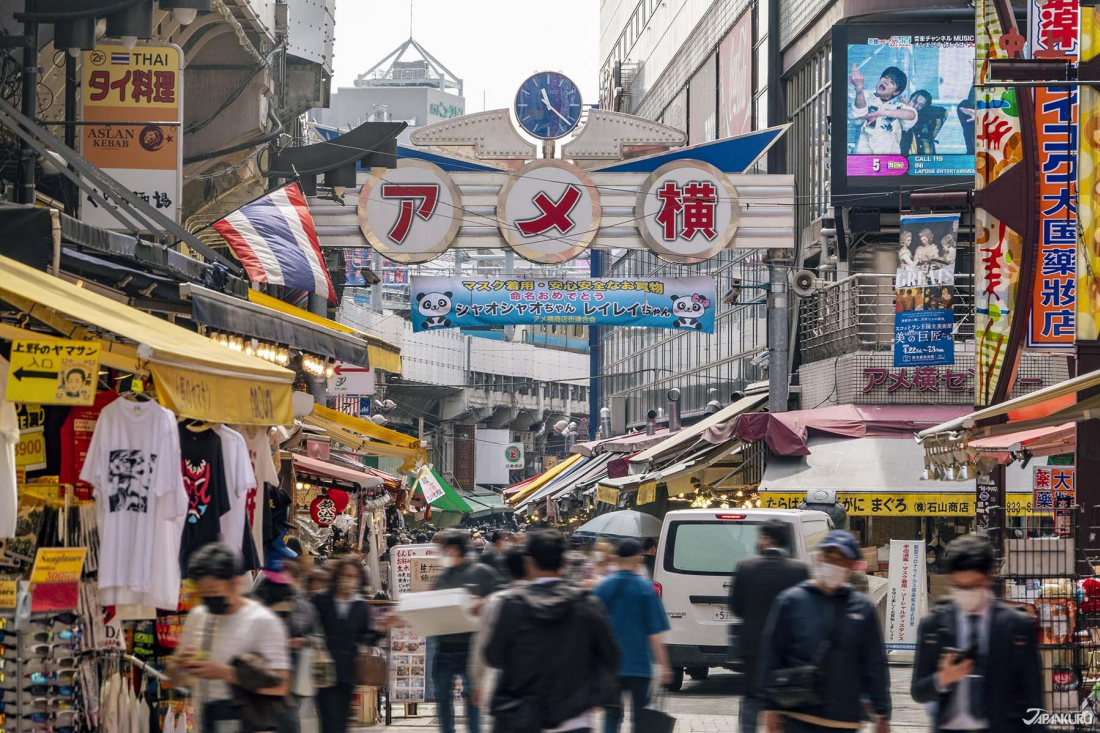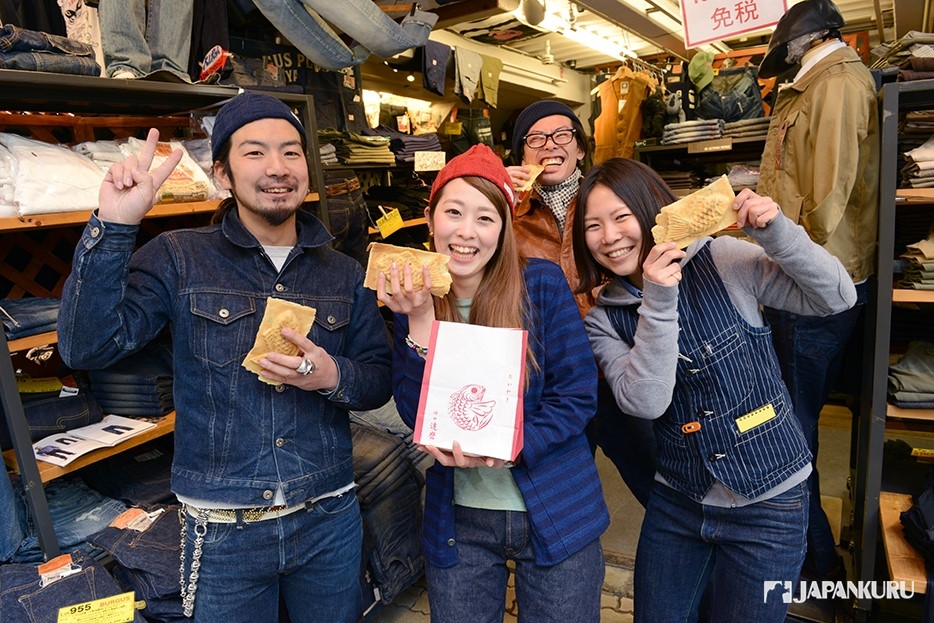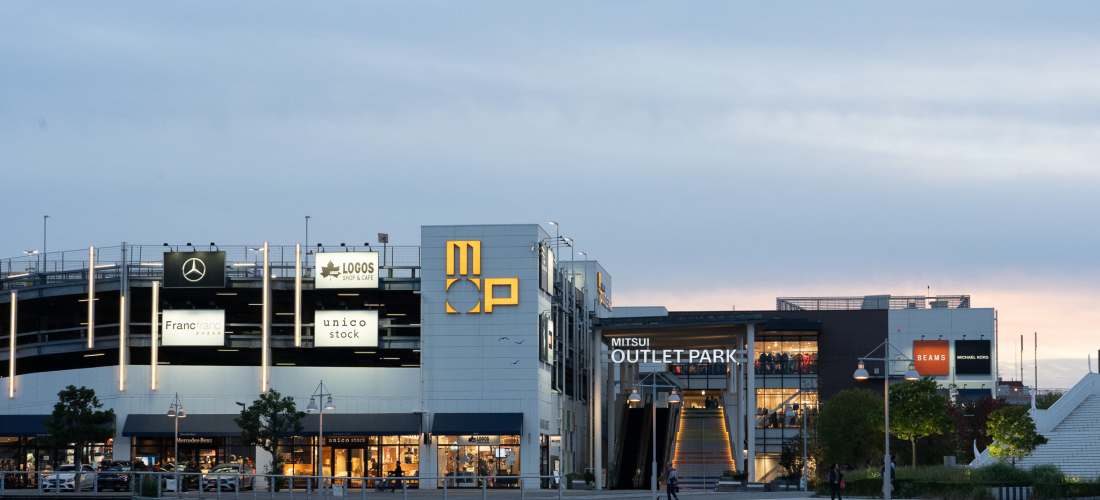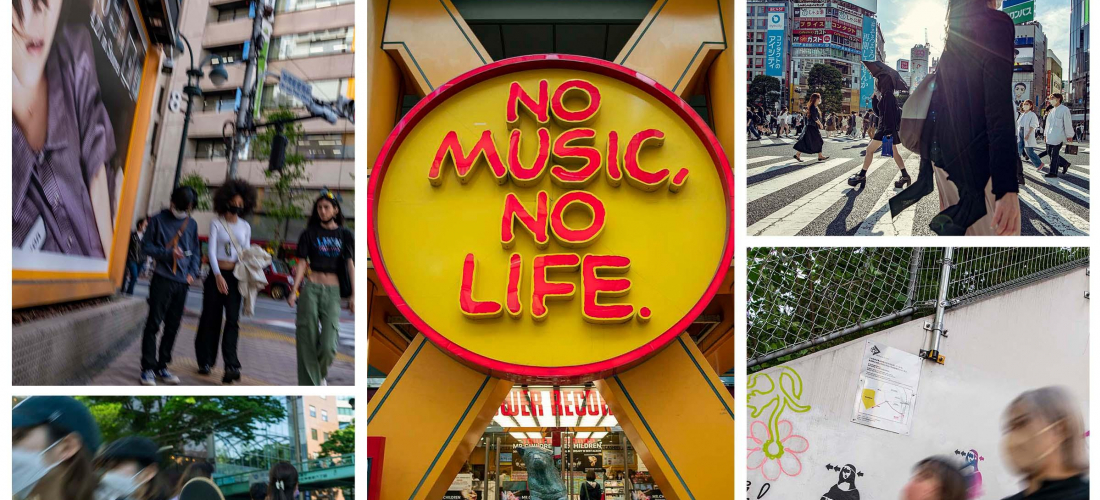CONTENTS
Ameyoko has been Ueno’s most lively shopping destination for decades on end, but do you know what to check out during your next visit?
What & Where Is Ameyoko?
Ueno has been a busy neighborhood of Tokyo for hundreds of years, since the days when it was part of the Edo's Shitamachi, where you might have found fewer samurai, but more merchants, craftspeople, and general trade. To this day, the cluster of narrow pedestrian streets between Ueno and Okachimachi train stations is a center of commerce, and at the heart of it all is Ameyoko, a shopping street that follows the JR train tracks rumbling overhead. Formerly known as "Ameya Yokocho" (but usually referred to by its shortened nickname), Ameyoko is a bustling market that packs a lot into the 400-meter (quarter-mile) stretch south of Ueno Station, lined with drugstores and souvenir shops, stores selling practical daily necessities and groceries, stores selling items you can't imagine anyone ever buying, tiny stalls and restaurants with flimsy outdoor seating, and much more. Like so much of Tokyo, this busy marketplace sprang up in the bombed ruins of a previous shopping and residential area during the postwar period, but it has prospered in the decades since, evolving into the shopping and sightseeing destination we know today. Between the crowds, and all the sounds, smells, and sights, it's easy to wander along Ameyoko for hours, but if your wallet is burning a hole in your pocket and you're ready to shop, here's what to look for!
➡ Ameyoko Classics: Candy & Army Surplus!?
There are a couple different origin stories for the name Ameya Yokocho (アメヤ横丁), and both stem from the goods available in the market after WWII. The word "yokocho" simply means alley or side street, and "ya" refers to some kind of shop, but why "ame"? Some say it's a reference to the candy, ame (飴) in Japanese, that was surprisingly plentiful at the market despite the severe sugar shortages of the period. Others will tell you that ame is short for "American," referring to the US army surplus sold after the war. Either way, both of these are still available in Ameyoko to these days, so shopping for them is just about the most authentic Ameyoko experience you can make for yourself! Shops scattered along the street and down neighboring alleys have displays of rugged-looking backpacks and full camo outfits, although it's not always clear which of these shops sell actual army surplus, and which are just going for a certain style. And when it comes to candy, Ameyoko has both large multi-building sweets shops like Niki no Kashi and also plenty of much smaller shops and counters specializing in sweet treats. There are traditional Japanese wagashi (和菓子) made with red bean and matcha, Japan's beloved retro candies and snacks referred to as dagashi (駄菓子), and of course modern Japanese favorites like flavored Kit Kats! Sweet tooths, rejoice!
➡ Ueno Fashion: High-Quality Denim & Shitamachi Styles
In-the-know fashion experts will tell you that Ameyoko is actually a must-see spot for anyone who loves Japanese denim, as the market has long been a shopping destination for denim in Tokyo. Hinoya – a shop still found on the opposite side of the train tracks – began selling military surplus in Ameyoko in 1949, and by the 70s, the shop had expanded to include American products like Levi's jeans. These days, at Hinoya and other shops nearby, American brands are found on the shelves alongside the Japanese brands that have become known internationally for making some of the best jeans and denim products around, which means that shoppers can stop by Ueno to pick up items from brands like Momotaro Jeans, Oni Denim, and Blue Blue, instead of having to travel all the way to the manufacturing sites in Okayama.
The clothing in Ameyoko isn't all top-tier high-quality denim, though. In the days of samurai, Ueno was a neighborhood for lower castes, part of the Shitamachi, and it still has its own down-to-earth kind of style. Clothing shoppers browsing the wares along Ameyoko aren't going to find Louis Vuitton opening up a shop any time soon, but there are plenty of shops selling jackets embroidered with colorful dragons, demons, and anime characters, or t-shirts with Japanese puns scrawled across the chest, and maybe some classy muumuus catering to Ueno's older crowd. For those with a more eclectic style, you might find the perfect thing to complete your look hanging on a display over Ameyoko.
➡ Tempt Your Tastebuds Under the Traintracks: Izakaya & International Eats
Finally, the first thing any shopper is likely to notice along Ameyoko is the food, and there's a lot of it. Those who are in Tokyo long-term might find themselves greedily eyeing the bulk prices of enormous bags of green tea and sacks of dried goods, and many of Tokyo's foreign residents flock to the international grocers both above and below ground, many of which offer unusual Asian ingredients. Displays spill out in front of the many little stores, showing off packaged goods, fresh fruit, and anything else you might want to stock up on. (Locals will tell you that the fresh fish sitting out at these groceries comes a little less highly recommended, though.)
For sightseers and locals looking for a snack, spots all along the street specialize in quick bites from all over Japan (and all over the world)! Grab a slice of melon on a stick, a dish of Korean fried chicken, a little bamboo boat filled with takoyaki, and wash it all down with some bubble tea – usually just called "tapioca" in Japan. On the other hand, after a long day walking around Ueno many people choose to sit down at one of the neighborhood's many popular izakaya. These eateries run on draft beer, whisky-sodas, and yakitori – grilled skewers stacked with juicy chicken thigh, flavorful meatballs, tender chicken hearts, and crunchy cartilage. Picky eaters will be just fine, but for anyone with an adventurous palate, well, the narrow alleys of Ueno beckon!
Once a ramshackle postwar marketplace, the Ameyoko of today has tons of history, plenty of retro charm, a little bit of modern flair, and enough shopping to keep you entertained all day. So whether you're looking for the kind of Japanese candy that made Ameyoko popular, the unique Ueno fashion that has kept shoppers coming for decades, or just a bite to eat and a fun night out on the town, don't forget to stop by Ameyoko!
Details
NAME:Ameyoko (アメ横)
ACCESS:Ueno Station (上野駅) or Okachimachi Station (御徒町駅)
PROFILE
Looking for the latest trends and products coming out of Japan?We've got you covered! <a href="https://www.worldshopping.global/target=_blank">Homepage</a> | <a href="https://www.facebook.com/worldshoppingjp/target=_blank">Facebook</a> | <a href="https://twitter.com/worldshoppingjptarget=_blank">Twitter</a> | <a href="https://www.instagram.com/worldshoppingjp/target=_blank">Instagram</a>
COMMENT
FEATURED MEDIA
VIEW MORE
Narita Airport Tax-Free Shopping List 나리타공항 면세점 쇼핑 리스트 #pr #calbee #jagapokkuru #japanesesnacks #japanesefood #japanesesouvenir #japantravel #japantrip #naritaairport #hokkaido #나리타국제공항 #나리타공항면세점 #나리타공항면세점과자 #일본공항면세점 #일본기념품쇼핑리스트추천 #공항면세점쇼핑리스트 #일본과자추천 #면세점일본과자 #일본기념품추천 #일본과자 #자가폿쿠루 #일본간식 #일본과자쇼핑 #일본면세점필수템 #일본기념품쇼핑

Asakusa's Sanja Matsuri, one of the biggest festivals in all of Tokyo, is almost here! Make sure you check out the festival route so you don't miss all the festivities this May. #asakusa #sanjafestival #sanjamatsuri #asakusashrine #sensoji #sensojitemple #japanesefestival #shintoshrine #japaneseculture #tokyo #tokyotrip #tokyotravel #asakusasightseeing #matsuri #japantrip #japantravel #springinjapan #tokyotravel #japankuru #산자마츠리 #아사쿠사 #일본마츠리 #일본여행 #일본5월

Odaiba's DiverCity Tokyo Plaza is home to the famous real-size 20m-tall Unicorn Gundam, and the popular shopping center has even more Gundam on the inside! Check out the Gundam Base Tokyo on the 7th floor for shelves upon shelves of Gunpla, and the Gundam Base Tokyo Annex on the 2nd floor for cool anime merchandise. Both shops have tons of limited-edition items! #pr #odaiba #tokyo #tokyotrip #japantrip #japantravel #PR #divercity #divercitytokyoplaza #tokyoshopping #gundam #unicorngundam #gundambasetokyo #anime #otaku #gunpla #japankuru #오다이바 #다이바시티도쿄 #오다이바건담 #건담 #일본건담 #건프라 #건담베이스도쿄

Evangelion, in miniature!? Tokyo's SMALL WORLDS Miniature Museum is actually a must-see for anime lovers, thanks to the tiny Evangelion Hangar and Tokyo-III... plus a whole universe of other scenes both real and fictional. #smallworlds #smallworldstokyo #tokyotrip #tokyotravel #evangelion #eva #anime #miniature #miniatures #animefigure #japantrip #japantravel #에반게리온 #스몰월드 #에반겔리온 #スモールワールズ #오다이바 #아리아케

Have you sat down for a snack at Sumida Aquarium yet? This aquarium next to Tokyo Skytree is known for its penguins and garden eels, but we can't get enough of their cute snacks! There are lots of good seats around the aquarium, too, so it almost feels like one big cafe. 🐧 • Find out more at Japankuru.com! (Link in bio.) • #japankuru #sumidaaquarium #skytree #tokyoskytree #solamachi #sumida #tokyo #tokyotrip #tokyotravel #aquarium #japanesesweets #themecafe #すみだ水族館 #Japan #日本 #일본 #Japon #ญี่ปุ่น #Japão #япония #japantravel #日本旅行 #日本旅遊 #japan_of_insta #japantrip #traveljapan #japan🇯🇵 #igerstokyo #explorejapan

For anime fans, the Evangelion areas at Small Worlds Miniature Museum are a must see! The tiny miniature people in the Evangelion Hangar look like ants beneath the moving Unit-01, Unit-00, and Unit-02! And over in Tokyo-III, characters like Shinji, Rei, and Katsuragi live life on a miniature scale. #odaiba #tokyo #tokyotrip #japantrip #japantravel #ariake #smallworlds #miniaturemuseum #smallworldstokyo #tokyotravel #evangelion #eva #anime #miniature #miniatures #animefigure #japankuru #스몰월드 #에반게리온 #오다이바 #오다이바관광 #오다이바스몰월드 #미니어쳐

